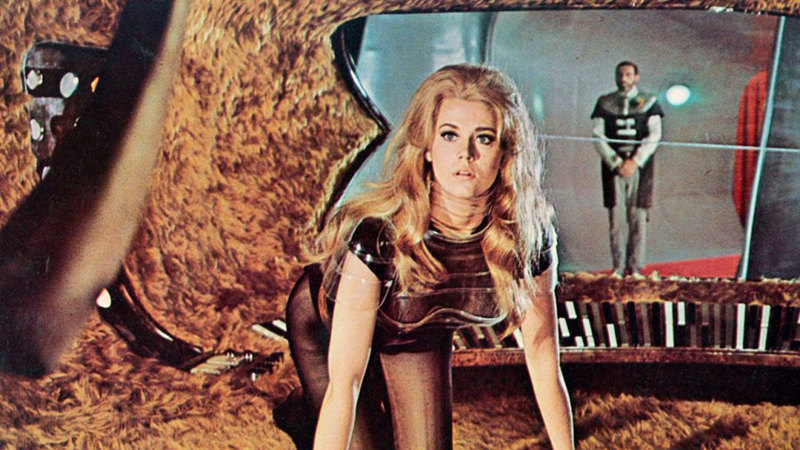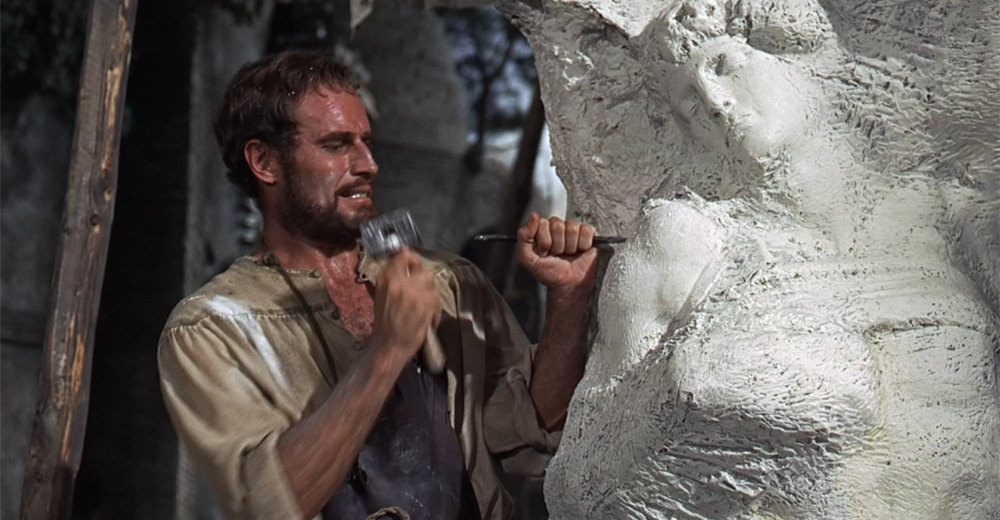“The Pianist” is Roman Polanski’s best film since the 1974 classic “Chinatown.” The fugitive director earned an Academy Award for Best Director and Adrien Brody earned a Best Actor Oscar. The film also took home the award for Best Adapted Screenplay for Jewish-Polish musician Wladyslaw Szpilman’s book. Based on the true story of Szpilman’s survival in the Warsaw ghettos, “The Pianist” is one of the finest films detailing the Jewish Holocaust and is a powerful and moving picture. The film currently sits at number 56 on the Internet Movie Database’s Top 250 list and has a Rotten Tomato score of 95% positive with 157 fresh reviews and only 8 bad tomatoes. With such high accolades, the film lost out to the film “Chicago” for best picture; an injustice in my opinion.
A brief synopsis of “The Pianist” has Adrien Brody starring in the autobiographical role of Wladyslaw Szpilman, a talented Jewish musician. When World War II begins in September 1939, Szpilman travels home to discover that both Britain and France have declared war on the invading Germans. Szpilman and his family believe the war will end fast, however, they find themselves soon huddled into the Warsaw Ghetto. Szpilman and his family and friends soon undergo the horrors of the German SS soldiers and the torture and pain they are subjected to by their captive soldiers. Conditions continue to deteriorate and everybody is gathered together and placed onto cattle trucks for transportation to a Nazi death camp.
Szpilman is saved from the journey to Treblinka by a longtime friend and is placed into slave labor by the Germans who continue to control Warsaw. He sees friends beaten badly for trivial faults during work under the cruel and unjust Germans and is beaten himself. Eventually, Szpilman has had enough and escapes from the German labor camp and flees into the surrounding Warsaw Ghetto and is kept hidden from the German SS soldiers by friends and old acquaintances. The people that help Szpilman have placed their own lives in danger and can barely provided additional rations to feed Szpilman. He scrapes by while in hiding and there are days when he has only a handful of beans to eat. During this time, Szpilman nearly succumbs to hunger and illness.
When the Germans eradicate nearly all of the Jews remaining the in Ghetto and the SS causes mass death and destruction in quelling a rebellion from surviving Jews in hiding, Szpilman finds himself alone in the Ghetto with nobody else apparently around. He spends his days rummaging through empty houses for canned goods and other edibles and sleeps in a third floor attic to hide from the German soldiers. One day Szpilman is found by a German Army Captain, Wilm Hosenfeld (Thomas Kretschmann). Szpilman fears he will be murdered by the German officer, but he is spared by Cpt. Hosenfeld when Szpilman plays the piano for him. During his final days hiding in the Ghetto, Hosenfeld makes use of the house Szpilman is hiding in as a headquarters and sneaks food to the hungry Jewish pianist.
“The Pianist” is one of the truly great films that educates audiences to the horrors of the Holocaust. The film succeeds because of the incredible performance by Adrien Brody and the love affair put forth by director Roman Polanski, who lost family members to a German occupied Ghetto during the Second World War. Polanski has been a fugitive from the law in the United States and along with his early life in the Krakow Ghetto, Polanski has had a tumultuous life. His wife Sharon Tate was murdered by notorious killer Charles Manson. The actor and the director deliver the pain, suffering and loneliness of Szpilman survival in the Warsaw Ghetto and without their efforts, “The Pianist” would not be the powerful film that it is.
The film is beautifully shot and the film’s recreated sets show the devastation and death that occurred in the Ghettos. The crumbled buildings and bombed out communities of Warsaw become another sorrowful character in the film and never once is a viewer treated to a comfortable image that shows the beauty of the lands where these horrors occurred. Only Steven Spielberg’s powerful “Schindler’s List” delivers a more powerful and painful world to show the unbelievably bad circumstances that Jewish survivors had to endure. Polanski places the viewer into the loneliness of the Warsaw Ghetto in this film. A tension is kept throughout the picture that reminds the viewer of the uneasiness and fear that Szpilman and other survivors had to live with.
Adrien Brody was a relative unknown before his star turn as Wladyslaw Szpilman. The film remains the only picture in which he has received accolades for his performance, but he was very much deserving of the Oscar win and Golden Globe and Screen Actors Guild nominations for his performance in “The Pianist.” He has since remained busy with a fairly low profile; only the popcorn film “King Kong (2005)” brought Brody to the attention of large audiences. His role as Louis Simo in “Hollywoodland” was another fine performance, but the work done on “The Pianist” is still his finest role to date. Watching Brody as he portrays the starving and scruffy Szpilman is almost painful. The actor appeared unhealthily thin for the role and seemed to suffer genuinely during each painful scene. With no lengthy supporting roles in “The Pianist,” Brody had to almost go at it alone, but he does so masterfully.
I think “The Pianist” is an incredible film and feel wholeheartedly that the film should have walked away with the Best Picture Oscar for 2002. The second best film of the year was “Gangs of New York” and I will always feel that “Chicago” winning the Oscar was a travesty. Regardless of what I think, I can take comfort in knowing that “The Pianist” is a film I will watch again in my home and will recommend to others. “Chicago” will never receive any such favors. It is emotionally charged and powerful. The direction by Roman Polanski and Adrien Brody’s incredible job of bringing the memoirs of Wladyslaw Szpilman to the big screen make this a must watch film. It shows the true evil of humanity and the ability for anybody to perform good deeds. It shows great acts of cruelty and great acts of personal sacrifice. Humanity is a complicated beast and “The Pianist” isn’t afraid to deliver the truth of a time when Humanity bore its fangs into the lives of innocents.
Video:
Universal Pictures delivers Roman Polanski’s finest film in a strong 1.85:1 framed picture mastered with the VC-1 codec at the full possible 1080p resolution. The five year old film is incredibly sharp in detail and rich in colors; although the palette is purposely desaturated to a minor degree to visually recreate the depressing and cruel world inhabited by Szpilman. The amount of color removed from each from is very minor and colors are typically very strong. Reds are bright and whites are clean. Detail is extremely good for much of the film and the cobbled streets of Warsaw and shattered debris of collapsed buildings is intricately detailed. Black levels are strong and shadow detail never wavers. There is a minor amount of grain in some sequences, but it never becomes annoying. One or two quick instances of pixilation occurred on darker gradients, but this too did not detract from the viewing experience. The source materials were also quite clean and looked pristine. This is a visually strong film and the resolution of HD-DVD does a masterful job of making “The Pianist” look quite stunning.
Sound:
Three soundtracks are provided for “The Pianist” on HD-DVD. The English 5.1 Dolby TrueHD is easily the recommended way to become immersed in the atmospheric film. An lesser capable, but comparably strong English 5.1 Dolby Digital Plus is also provided, as is a French 5.1 Dolby Digital Plus for those living in Roman Polanski’s homeland. Subtitles are included for English SDH and French. With music being a key factor to the life of Wladyslaw Szpilman, the music by Wojciech Kilar is clean and effective in delivering additional emotion to “The Pianist.” The sound effects and dialogue in the film are also handled cleanly and effectively. The front three channels handle much of the load of “The Pianist,” but the low frequency effects channel and rear surrounds are used effectively when the soundtrack needs them. This is a film where silence and loneliness are key elements and the sound design can get quite lonely. However, when permitted, this is an engaging film with great ambient sounds and “The Pianist” is about as clean as a film can get.
Extras:
Although Universal again touts Microsoft’s HDi Real-Time Interactivity on the rear packaging and their My Scenes functionality, only one true supplemental feature is provided. The HDi interface is the standard Universal menu system we’ve all come to love and “My Scenes” allows for a library of scenes to be saved. I haven’t found much use for this feature, aside from showing off ‘reference quality’ scenes, but it is a nice inclusion none-the-less. The true supplement entitled The Story of Survival (39:43) finds director Roman Polanski, star Adrien Brody and others talking about their experience in bringing the personal memoir of Wladyslaw Szpilman to life. They discuss the efforts in delivering realism to the film and Polanski talks about his own Holocaust experience. Actual footage of the true-life Szpilman is provided and all-in-all, this is a very nice making-of-documentary. I’ve always felt that “The Pianist” has not been given the attention it deserves in the area of “Extras,” but “The Story of Survival” should be watched.
Closing Comments:
“The Pianist” was my personal pick for best picture in 2002. I’m still amazed the film lost to “Chicago,” but worse injustices have occurred with the Academy. After all, Julia Roberts won an Oscar for Best Actress. My argument toward the Academy Awards aside, “The Pianist” is a powerful and important film about a true survivor of the Jewish Holocaust. Director roman Polanski is another survivor of this horror of humanity and his own passion comes through in each filmed frame. Adrien Brody was perfectly cast and provided one of the finest performances in generations as Wladyslaw Szpilman. This is a rare film that serves as a perfect companion to “Schindler’s List’ in detailing the incredible acts of violence and incredible acts of kindness that occurred in German death camps and Ghettos during World War II. It is simply a must-watch film. The HD-DVD features stunning video and efficient and clean sound. This film has yet to get the love it deserves in the area of value-added content, but it does contain one very nice making-of documentary. HD-DVD may have taken a strong blow from the recent Warner Bros. Blu-ray announcement, but “The Pianist” is a strong argument that we shouldn’t abandon the format just yet.


